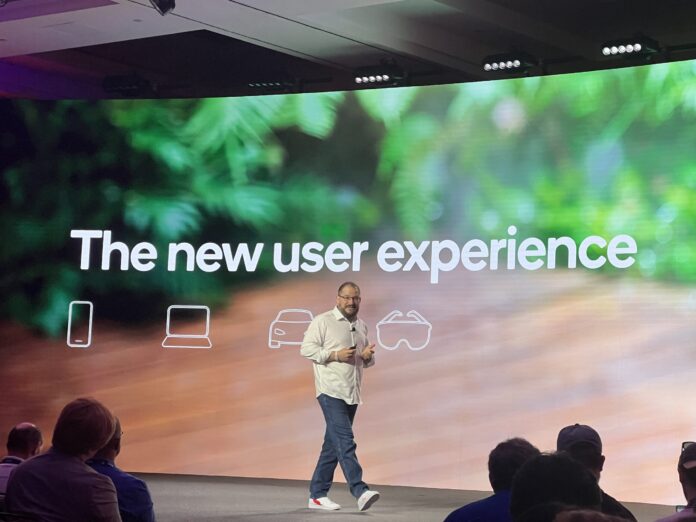LAS VEGAS–As you’d expect, CES was dominated by positioning, presentations and products designed to capitalize on the (hopefully durable) moment generative artificial intelligence (gen AI) is having. As to how this opportunity maps generally to the mobile industry and specifically to Qualcomm, company CEO Cristiano Amon laid it out during a keynote interview.
Amon’s commentary aligns with Qualcomm’s shift from a focus on wireless connectivity to connected processing as evidenced by its launch last year of the Snapdragon X Elite PC platform featuring the custom-designed Oryon CPU which is set for horizontal scaling across Qualcomm’s portfolio.
“In this space, we are the underdog,” Amon said. “This is all growth opportunity for Qualcomm…We have been well know for what we have done and continue to do in the mobile industry…What is good for Qualcomm is our mobile DNA.” The challenging engineering environment associated with mobile SoC engineering—constraints around size, battery management, thermals and the need for ongoing increases in compute performance—“gives us an advantage” as that same technology paradigm begins to apply to new types of product implementations.
Amon reiterated Qualcomm’s capabilities around on-device gen AI wherein AI acceleration on a handset or a PC provides a better user experience as compared to cloud-based AI processing, and solves very real challenges around a cloud-first AI approach, particularly latency and cost.
“AI is going to develop different from the cloud to the devices,” he said, making the point that personal devices are much more context-aware than servers in a data center. Amon gave the example of your mobile device using contextual information—text message history, emails, calendar, location, etc…—as query parameters for a gen AI tool like ChatGPT. On-device gen AI, he said, “complements the data center.”
He rightly pointed out that smartphone-based computing is being complemented by, rather than replaced with, new types of computing platforms like extended reality devices, wearables, PCs, and even vehicles. All of these can also serve as inputs for an AI tool in addition to providing localized compute power. “What AI is doing is really merging the smartphone in the cloud, and it’s changing how you think about the computing platform,” Amon said.

